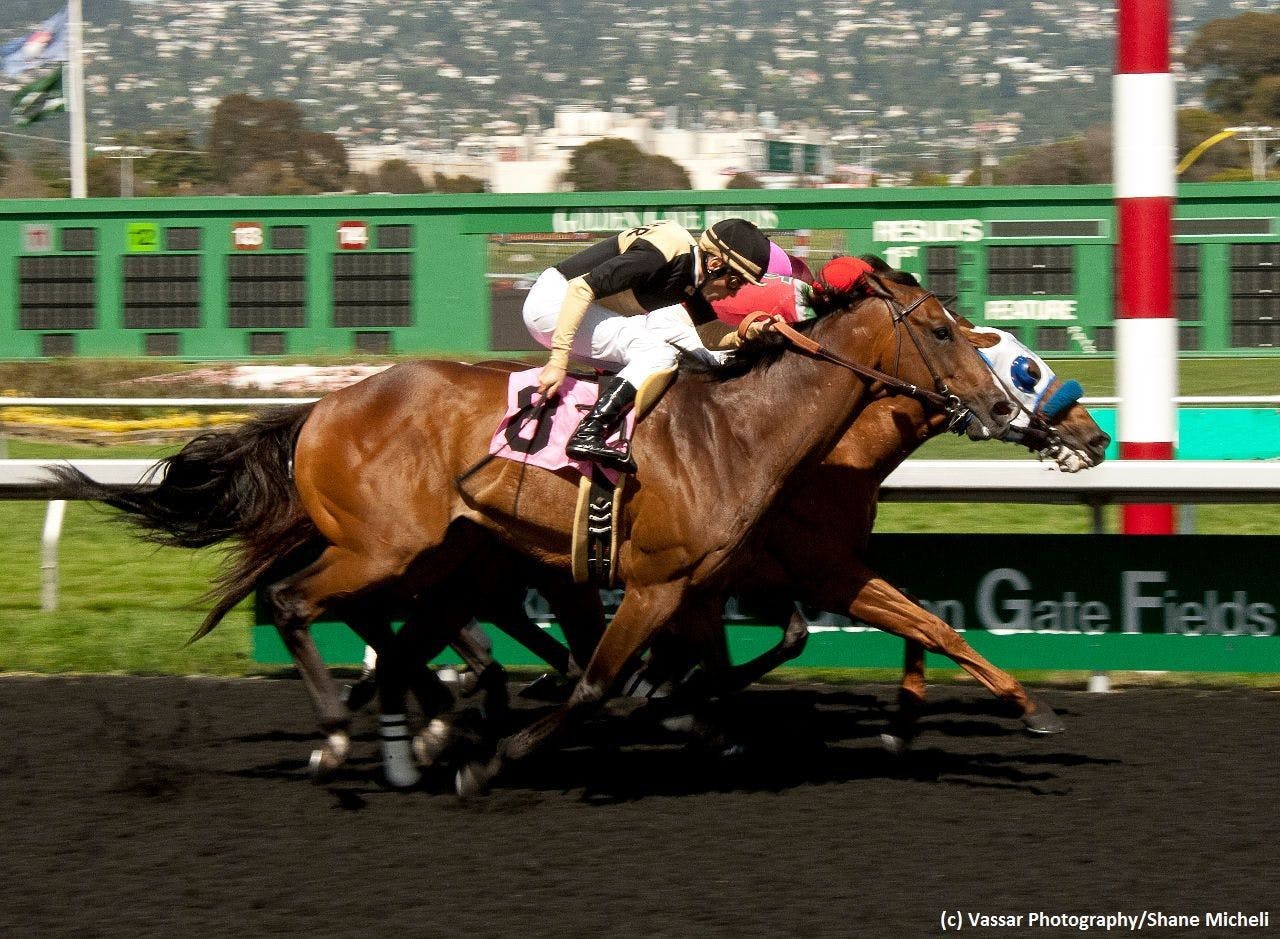What are synthetic tracks? Everything you need to know

Racing at Golden Gate Fields - Vassar Photography/Shane Micheli
For decades, dirt and turf were the two major racing surfaces found in horse racing. But starting in the 2000s, synthetic tracks entered the scene, introducing a major new factor for handicappers to consider.
Want to learn more about synthetic tracks? Here’s what you need to know.
What is a synthetic track?
A synthetic track is a racing surface typically comprised of ingredients like sand, fiber, wax, and rubber. The term “synthetic” distinguishes such tracks from natural racing surfaces like dirt and turf.
Many terms are used to describe the amount of moisture held by dirt, turf, and synthetic racing surfaces...
— TwinSpires Racing 🏇 (@TwinSpires) September 15, 2021
Let @J_Keelerman help you get acquainted with them ⤵️ https://t.co/p32Ky7vsTV
Synthetic tracks are popular for a variety of reasons. Evidence suggests they’re safer than dirt or turf surfaces. They’re also conducive to racing in cold or wet weather, and are often referred to as “all-weather” (AW) tracks. “Artificial” is another name you might hear.
What are the different types of synthetic tracks?
Many different types of synthetic tracks have been tried through the years. In North American, Polytrack was widely used starting in the mid-2000s, but Tapeta has since become the surface of choice. Polytrack remains widespread in the United Kingdom.
Cushion Track and Pro-Ride are other notable varieties once installed (but no longer found) in North America.
How can I tell if a given track is synthetic?
If you’re using Brisnet Ultimate Past Performances, identifying synthetic tracks is easy. Just look for an “A” enclosed in a circle; you’ll find it at the top of every page (if the race you’re handicapping is taking place on synthetic) or within the running lines of the past performances. It’s similar to the “T” enclosed in a circle (or square) used to designate turf races.


One minor note—if a grass race is rained off the turf and transferred to a synthetic track, it will be marked with an “X” enclosed in a circle (the marker for an off-the-turf race) rather than the usual “A.” The X symbol is also used when turf races are transferred to dirt, so knowing which surfaces tracks utilize is the key to determining whether an off-the-turf race took place on synthetic or dirt.
Which North American racetracks have synthetic surfaces?
As of January 2022, the following North American racetracks offer synthetic racing:
- Golden Gate Fields (races on Tapeta and turf)
- Gulfstream Park (races on Tapeta, dirt, and turf)
- Presque Isle Downs (races exclusively on Tapeta)
- Turfway Park (races exclusively on Tapeta)
- Woodbine (races on Tapeta and turf)
How do I know if a horse can handle synthetic footing?
In Brisnet Ultimate Past Performances, it’s easy to determine whether a horse has previously run well on synthetic. Just look for the row of data marked “AW” in the upper right corner.

A record of “4 0-1-2 $8,680 68” indicates that the horse has run four times on synthetic, recording zero wins, one second, and two thirds while earning $8,680. The highest Brisnet Speed rating the horse has posted on synthetic is a 68.
Now that you’re primed on the basics of synthetic tracks, you’ll feel more confident betting races held over these surfaces. Good luck!
ADVERTISEMENT



